We all set goals, but are those goals effective? Look back on the goals you have personally set or on the goals your students have set. Are those goals positively impacting growth in the area of that goal? Stating something you want to accomplish is not an effective goal. Based on research effective goal setting requires a specific process.
The process involves reflecting on:
- Where do you want to go?
- Where are you now?
- How will you get there?
- Where to next?
Effective goal setting has a positive impact on growth
This post contains some affiliate links for your convenience. Click here to read my full disclosure policy.
Goal setting is important for people of all ages. If we help kids learn the process of setting goals at a young age they will develop it as a habit. It also helps kids have a strong purpose for their learning.
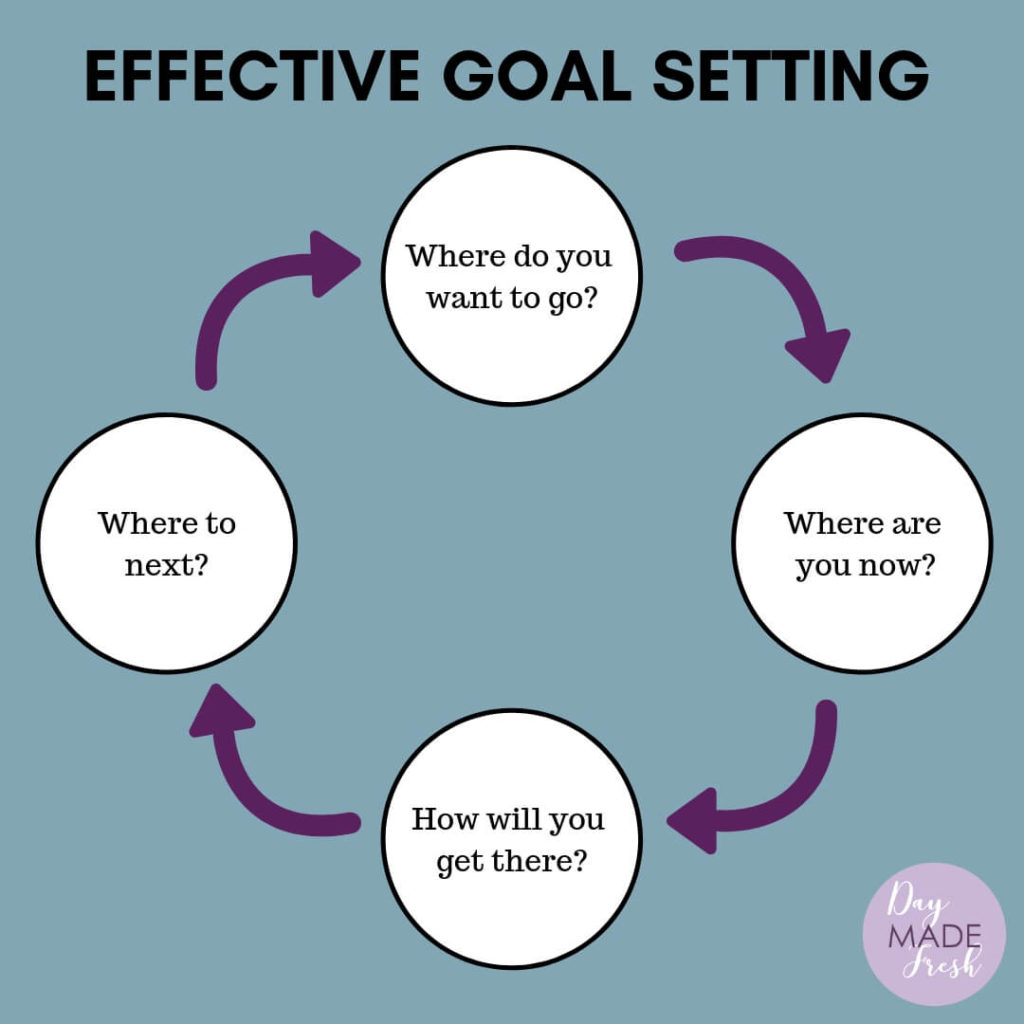
John Hattie, an education professor and researcher, has found that effective feedback has a positive effect on student achievement. The questions involved in this process are based on his research of effective feedback.
One of the best ways to teach children about the goal-setting process is to model it. Set a goal for yourself and model how to create a plan and work towards that goal. Then check in with your students and share your progress. Kids are awesome accountability partners.
Want an easy to use goal setting worksheet? You can sign up here to get your FREE copy!
Where do you want to go?
The first step in the process of effective goal setting is to decide where you want to go. This is the time to start with the big picture.
DREAM. VISUALIZE. Who do you want to be in the future? What do you want to accomplish? Think ahead and picture what you will feel like, look like, etc. when you reach your goal.
Rachel Hollis talks listeners through a process like this on her Rise podcast episode # 72 This Daily Practice Changed My Life and My Business. She also includes the same process in her Start Today Journal and her new book Girl, Stop Apologizing.
After following Rachel’s process myself I did a similar visualization with third-grade students. I had them visualize ten years into the future (graduating high school) and five years into the future (starting middle school). Then I had them visualize the end of third grade.
This visualization activity gave them a great incentive. They were eagar to start writing out and planning their goals for the school year.
It’s important to make sure that before you start goal setting that you and your students have a growth mindset. If you would like to know more about developing a growth mindset read this post about 4 simple ways to nurture a growth mindset in kids.
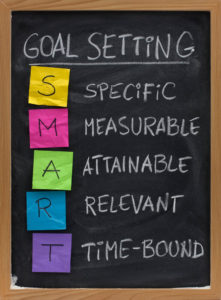
Once you have the big picture it’s time to narrow down to 1-3 goals. If you’re working with young students start with one goal. three goals could look like; one reading goal, one math goal, and one personal goal.
The wording of the goal is important. It should be a SMART goal: specific, measurable, achievable, relevant, and time-bound. It can also be beneficial to write it in the present versus the future as if the goal has already been achieved. For example, instead of “I will read 100 words per minute by January 1st” write, “I can read 100 words per minute in January.’
Effective goal setting with kids should help them make the process a life-long habit, reinforce their growth mindset, and help develop ownership of their own learning. Meeting their goal is just an added benefit.
I created a goal setting worksheet to guide kids through this process. It can be used for any type of goal. To help others with the goal-setting process I’ve created a free goal setting worksheet with a reflection worksheet. Sign up to get your FREE copy and other helpful goal setting printables.
A great tool to help students with goal-setting is a data binder. You can read more about data binders in this post: Elementary Student Data Binders- Whose Data is it?
Where are you now?
After defining where you or your students want to go the next step is to evaluate where you are now. Knowing your starting point allows you to clearly identify what steps you need to take to get where you want to go.
With students, this is an important step to effective goal setting. They may not have a concrete understanding of where they are in their learning. They may also have misconceptions of their abilities or lack of abilities.
It can be extremely helpful to show students a visual of where they are compared to where they want to go. This can be overwhelming for students if they have a fixed mindset versus a growth mindset.
If you’re working with kids with a fixed mindset check out my post about nurturing a growth mindset.
It’s important to always focus throughout this step on the concept that it doesn’t matter where now is. In the next
How will you get there? Who can help you?
A goal without a plan of how to reach it will fail. This is the step that we often breeze past, but it is a vital step to set the goal up for success. It is important to spend a substantial amount of time laying out a plan.
“A goal without a plan is just a wish.”
-Anotoine de Saint-Exupery
To start this step brainstorm any and all the things that you could do to move you closer to your goal. Then put them in order based on which you could accomplish quickly and easily. The reason for here is that it will build confidence and momentum. It will also train your brain to see
When you face something difficult this will help pull you through. If you take on smaller challenges first you will build the habits that will help you overcome roadblocks. This way you are stronger and ready to handle the next challenge.
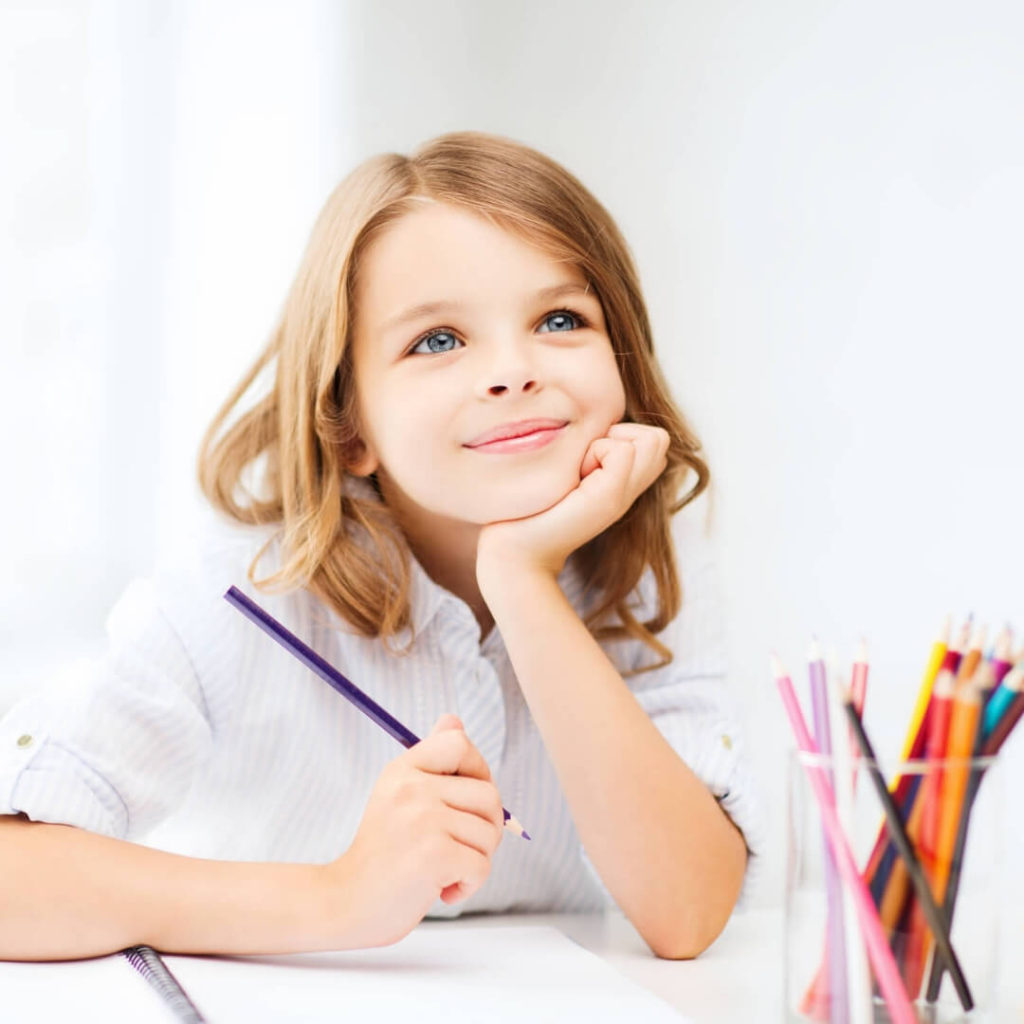
Imagine if you start with the most difficult step first. It could have a huge impact on reaching your goal. If you become overwhelmed and discouraged too soon there is a high likelihood of you giving up. So you don’t reach your goal at all.
When doing this step with kids limit them to 3-4 steps. This way they are not overwhelmed. Through questioning help them evaluate which step they should tackle first. They are still learning their own capabilities and will need more guidance with this. As they become more comfortable with the process they will be able to make those decisions independently.
Ready for some effective Goal Setting? Get a copy of my goal setting and Reflection Worksheets.
As adults we can rely on ourselves, for the most part, to reach our goals. However, kids are still very reliant on adults. So, it is important to also plan for who can help them reach their goal. Then communicate the plan with those stakeholders.
Like with all the other steps in the effective goal setting process the plan you are creating is not set in stone. If it’s not working reevaluate and adjust as needed. If you get off track that doesn’t mean you’ve failed. Brush it off and start back up again. This isn’t an all or nothing process.
Where to next?
Goal setting isn’t a one and done process. It is a constant cycle that helps us learn and grow into our best selves. This is the purpose of the next step; reflecting on the process and identifying where to next. This is done when a goal is accomplished or when the time frame is up.
First identify if the goal was met, exceeded, or not met yet. If the goal has not yet been met then it is time to adjust the plan (How will you get there?). If the goal has been met or exceeded CELEBRATE the accomplishment and then look to where you want to go next.
Celebrating an accomplished goal can come in many forms. It can be a tangible reward like a prize or it can be a celebration that acknowledges the accomplishment. With kids, this can be as simple as a certificate that states the goal that was met.
It is also helpful to reflect on the process asking:
- What went well?
- What could have been done better?
- What was hard, but overcome?
To coincide with the goal setting worksheet I’ve also developed a reflection worksheet. You can find both here.
Then it is time to start the process again and identify where do you want to go next…
Effective goal setting is the process that helps us grow into the best versions of ourselves. As adults, we need to model to the children around us that this an ongoing process. It is critical that we model and guide students through this process at a young age. So it becomes a habit that they take with them.
The goal and the plan to accomplish the goal does not need to be perfect. It is better to get started and make adjustments than to spend forever planning and get nowhere.
Save this post by pinning it now on Pinterest!
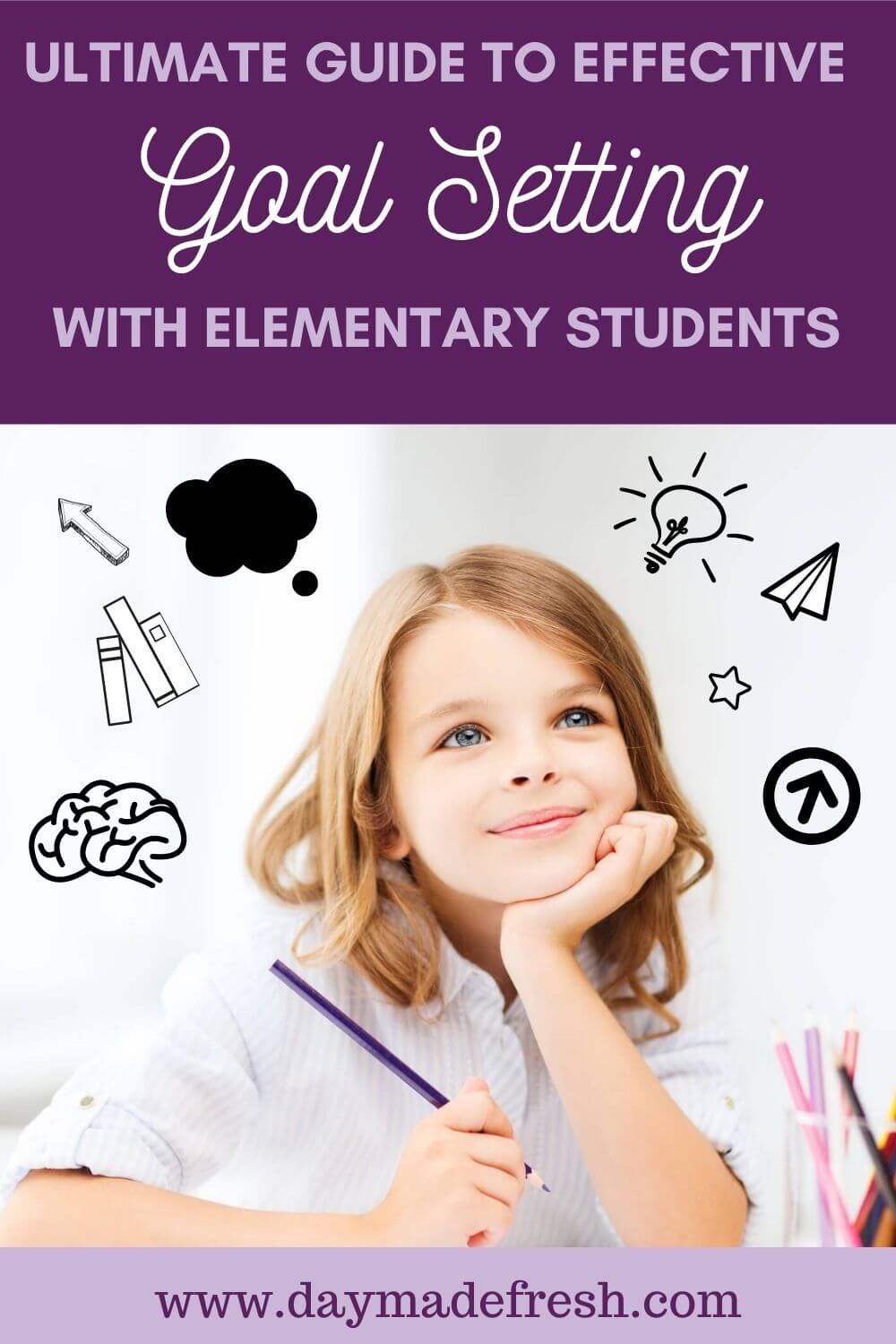
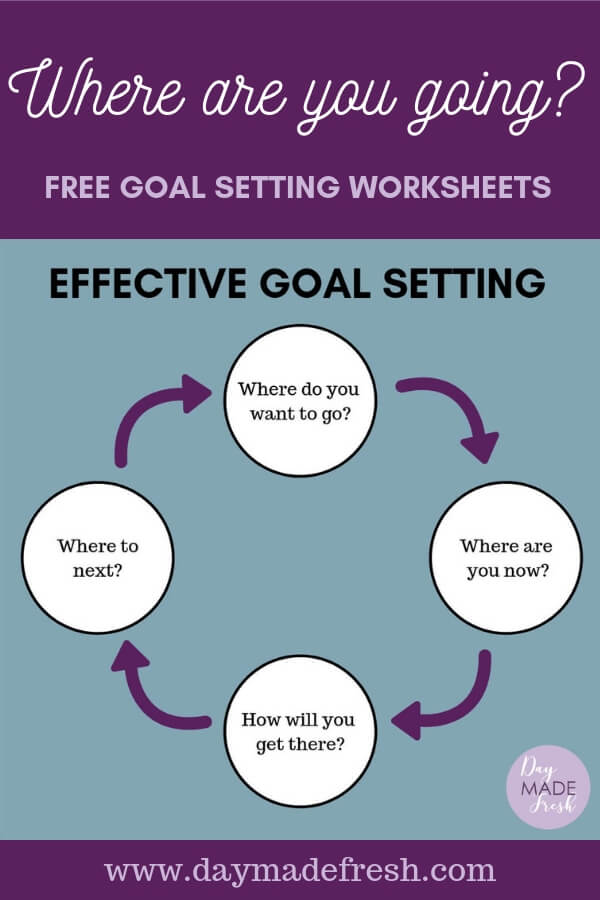
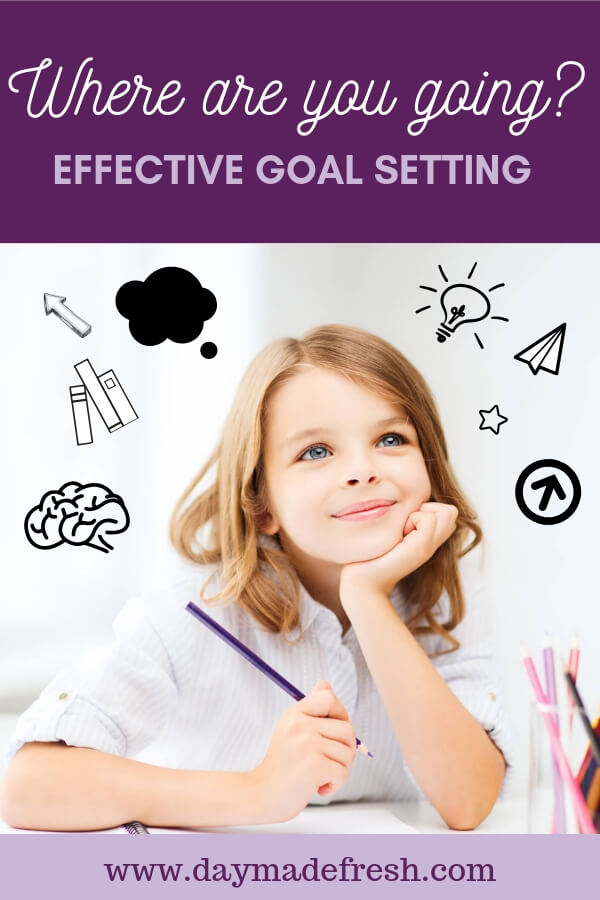
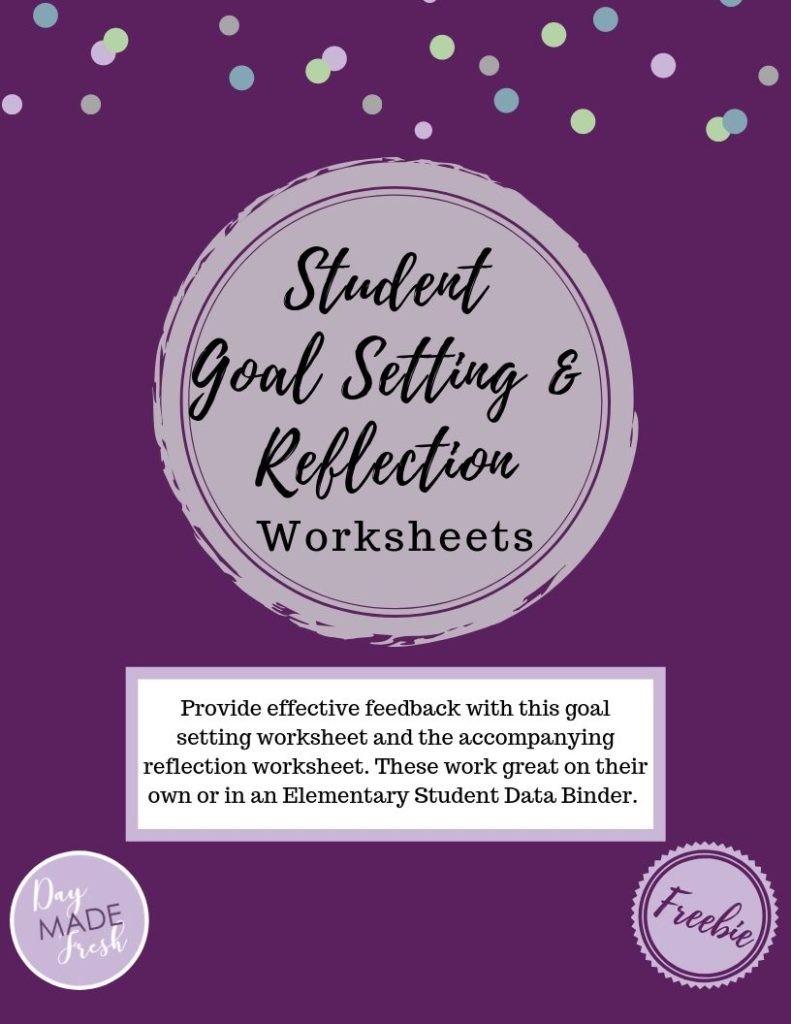

Deborah says
I am so glad teachers teach goal setting now. I know my generation would have benefitted from it.